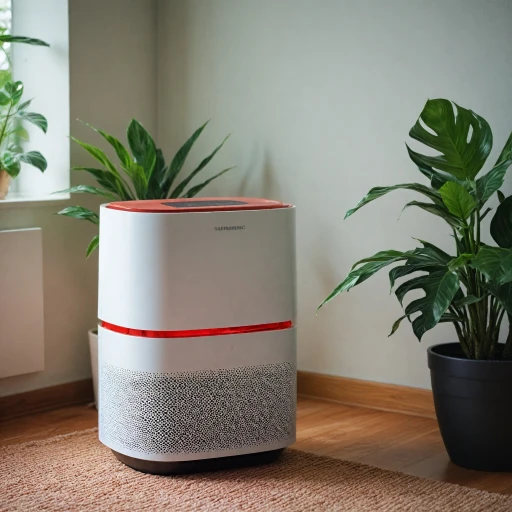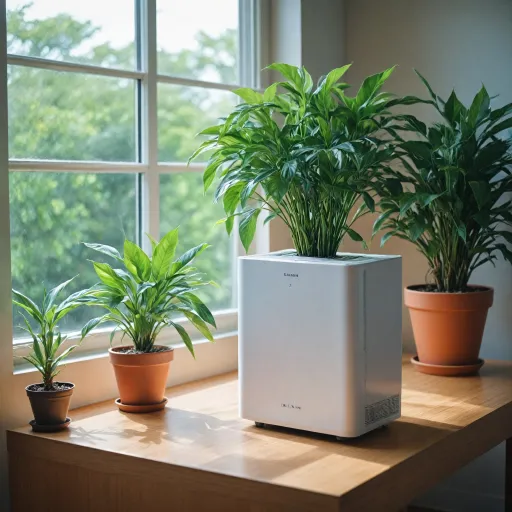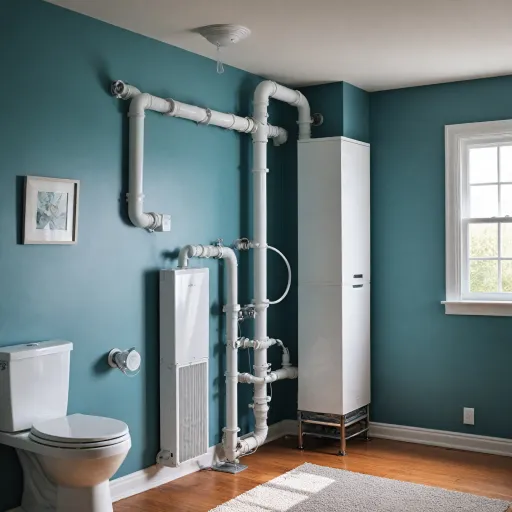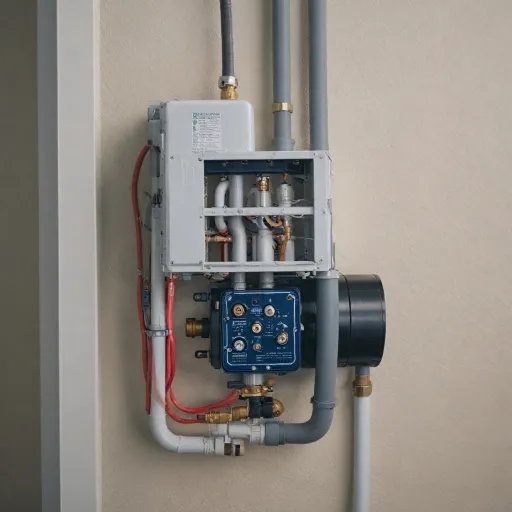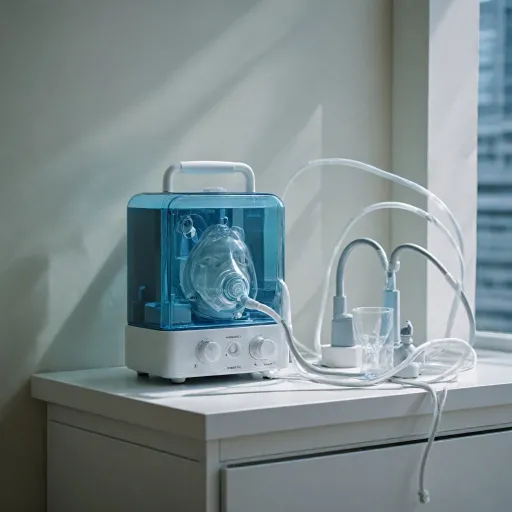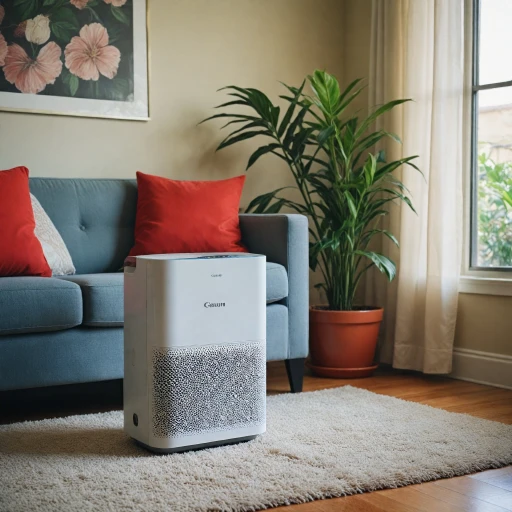
The Role of Air Purifiers in Indoor Air Quality
The Essential Role of Air Purifiers in Enhancing Indoor Air Quality
Air purifiers play a crucial role in maintaining a healthy indoor environment by removing pollutants and allergens from the air. These devices are particularly beneficial in spaces where air quality testing reveals high levels of contaminants such as mold, dust, and volatile organic compounds (VOCs). By filtering out these harmful particles, air purifiers help improve the overall quality of the air you breathe.
In many homes, schools, and offices, the HVAC system circulates air throughout the building. However, without proper filtration, this system can also spread pollutants. Air purifiers work alongside HVAC systems to provide an additional layer of protection, capturing particles that might otherwise go unnoticed. For those interested in understanding how different components of HVAC systems contribute to air quality, exploring the role of a condensate pump in mini-split systems can offer valuable insights.
When considering an air purifier, it's important to select options that suit your specific needs. Some purifiers are designed to target specific pollutants, while others offer more comprehensive air cleaning capabilities. Pairing an air purifier with an indoor air quality (IAQ) test kit can provide a detailed understanding of the pollutants present in your environment, allowing for more effective IAQ management.
By using an IAQ test kit, you can monitor air quality in real time and identify areas that require attention. This proactive approach not only helps in maintaining optimal indoor air quality but also aids in the long-term management of your indoor environment. As you explore the various options available, consider how different testing kits can complement your air purifier to create a healthier living space.
What is an Indoor Air Quality Test Kit?
Exploring the Essentials of Air Quality Test Kits
Understanding what an indoor air quality (IAQ) test kit entails is crucial for anyone looking to maintain a healthy indoor environment. An IAQ test kit allows you to monitor and evaluate the quality of the air within your home or workspace, providing insights into potential pollutants such as mold, organic compounds, and surface contaminants. A comprehensive test kit often comes equipped with a variety of components that help identify various air pollutants. These kits can range from basic options that focus on common air issues, to more detailed kits designed for professional indoor air quality management. Selecting the right kit depends on your needs and the specific air quality concerns within your environment. Many kits offer options to test for high levels of certain pollutants, giving you the flexibility to choose based on the priorities of your indoor space.Components and Functionality
Most IAQ testing kits include sampling tools that allow you to collect air samples from different areas of your home. These samples can then be sent to a lab for analysis, or in some cases, real-time monitoring is possible. Advanced kits may include digital monitors that connect to your HVAC system, providing ongoing readings and alerts for any significant changes in air quality. Schools, hospitals, and other establishments with complex HVAC systems often benefit from test kits offering detailed data. These data help in effective IAQ management by providing insights into air quality trends over time.Why Testing is Vital
IAQ testing is not just about peace of mind; it's about being proactive in managing your overall health and well-being. By understanding the specific pollutants present, you can take targeted actions to improve air quality. For more insights on improving indoor air through advanced air cleaners, consider exploring how you can enhance your indoor air quality effectively.Benefits of Using an IAQ Test Kit with Your Air Purifier
Maximizing the Benefits of Air Purifiers with IAQ Test Kits
Integrating an Indoor Air Quality (IAQ) test kit with your air purifier can significantly enhance the air quality in your home or office. These kits offer a detailed analysis of the air pollutants present, helping you make informed decisions about your indoor environment.
Here are some key benefits of using an IAQ test kit alongside your air purifier:
- Comprehensive Air Quality Testing: IAQ test kits provide a thorough assessment of various air pollutants, including organic compounds and surface mold. This detailed information helps identify specific issues that your air purifier can address more effectively.
- Real-Time Monitoring: Many IAQ testing kits offer real-time data, allowing you to monitor changes in air quality as they happen. This feature is particularly useful in schools and other environments where air quality management is crucial.
- Enhanced IAQ Management: By understanding the specific pollutants present, you can optimize your air purifier settings and select options that best suit your needs. This targeted approach ensures that your HVAC system works efficiently to maintain quality air.
- Professional Indoor Air Quality Guide: Some kits come with professional guidance, offering insights into how to interpret your results and improve your indoor air quality. This can be a valuable resource for those new to IAQ testing.
For a more comprehensive understanding of how to maximize the use of your air purifier, you can explore this guide which offers practical tips and insights.
How to Choose the Right IAQ Test Kit
Selecting the Perfect Air Quality Test Kit for Your Needs
Choosing the right Indoor Air Quality (IAQ) test kit is crucial to effectively monitor and manage the quality of the air within your home or workspace. With numerous options available, understanding what each testing kit offers can help guide your decision. Here’s a guide to help you select the best IAQ test kit:- Determine Your Needs: Assess the specific pollutants or concerns within your indoor environment. If you’re worried about allergens or mold, select a kit that tests for these specific substances. Conducting an air check for volatile organic compounds (VOCs), surface mold, and other air pollutants is important in environments like schools or homes with HVAC systems.
- Consider the Testing Method: Some IAQ testing kits offer real-time results, while others involve sample collection and sending the samples to a lab for detailed analysis. Real-time options are beneficial if you need immediate data, whereas lab analysis can provide more in-depth results. Make sure the method aligns with your air quality management goals and time constraints.
- Professional vs. DIY Kits: Professional indoor air quality testing kits generally offer more comprehensive insights but can be more expensive. DIY kits are more budget-friendly and convenient for regular monitoring. Evaluate your comfort level in performing the tests yourself and the complexity of the IAQ management your situation requires.
- Read Reviews and Product Guidance: Look for consumer reviews and expert opinions about the kit’s effectiveness in identifying specific air quality issues. Pay attention to the instructions and support the manufacturer offers, which can significantly affect your experience during the testing process.
- Check Compatibility: Ensure the test kit is compatible with your HVAC system and any existing monitoring equipment you might already have installed. Some advanced kits can be integrated into your system for ongoing air quality monitoring.
Interpreting IAQ Test Kit Results
Deciphering Results for Enhanced Indoor Air Quality
Interpreting results from an Indoor Air Quality (IAQ) test can be a bit daunting at first glance, but it is pivotal for maintaining a healthy indoor environment. Here’s a step-by-step guide on how to make sense of your detailed air quality testing results:- Identify Key Pollutants: Your test kit results typically include data on various pollutants such as volatile organic compounds (VOCs), carbon monoxide, and surface mold. Pay attention to the concentration levels of these pollutants in your sample.
- Compare to Standards: Match the results with air quality standards set by authoritative bodies. This comparison will help you understand if your indoor environment meets acceptable air quality levels.
- Look for Trends: Use IAQ test kit data to identify patterns in air quality over time. For instance, recurring issues with mold or organic compounds might indicate persistent sources that need addressing.
- Consider HVAC System Impact: Evaluate how your HVAC system influences these results. In some cases, improving ventilation or maintenance may be required to enhance indoor air quality.
- Professional Guidance: Consider consulting professionals, especially if your test reveals high levels of pollutants. They can offer help in formulating an effective iaq management plan that might include selecting appropriate air purifiers.
Maintaining Optimal Indoor Air Quality
Strategies for Sustaining Healthy Indoor Air
Ensuring your indoor environment remains healthy requires a series of proactive steps to manage the air quality continuously. Regularly engaging in quality testing with an IAQ test kit will furnish valuable insights into the air pollutants present, helping you adapt your strategies effectively. Here's a guide to maintaining optimal indoor air.- Routine Quality Testing: Consistent IAQ testing serves as the backbone of quality management. Whether using a professional indoor air quality test kit or real time monitoring options, timely sampling can uncover the presence of surface mold and other organic compounds.
- Effective Use of Air Purifiers: An efficient air purifier integrated into your HVAC system can drastically improve your indoor air quality. It offers a reliable shield against common pollutants identified during quality testing.
- Understanding Test Results: Use the detailed guide provided by your test kits to interpret findings accurately. This knowledge helps identify specific air pollutants, allowing for targeted management measures.
- Stay Informed on Air Quality Management: Be proactive by keeping up with the latest methods and technologies for managing indoor air quality. Educational resources and workshops, such as those offered by schools or specialized professionals, can be highly beneficial.
- Implement Tailored Actions: Based on your quality test results, select options from various intervention strategies—ranging from mold remediation to upgrading your HVAC system—to address identified air problems effectively.

